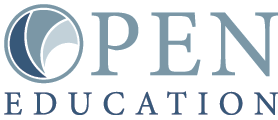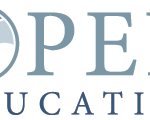Notes from Selected OpenEd 2011 Keynotes
[fusion_builder_container hundred_percent=”yes” overflow=”visible”][fusion_builder_row][fusion_builder_column type=”1_1″ background_position=”left top” background_color=”” border_size=”” border_color=”” border_style=”solid” spacing=”yes” background_image=”” background_repeat=”no-repeat” padding=”” margin_top=”0px” margin_bottom=”0px” class=”” id=”” animation_type=”” animation_speed=”0.3″ animation_direction=”left” hide_on_mobile=”no” center_content=”no” min_height=”none”]
Here’s a public version :) of my notes from the keynotes at OpenEd 2011.Jim Shelton
Jim Shelton, from the Department of Education gave one of the mini-keynotes (unfortunately I missed the opportunity to say hello and plug the Gates Symposium, he stepped away to take a call and I missed him in that window).
Ecosystem to drive OER from the fringe to the center:
- Conversation needs to shift to OER being better: outcomes, things you can do (access, embedded science, etc.)
- More and Better OER about Creating ER: how people elarn, how to…, best in-class exmples (wants us to move to cognitive task analysis)
- Basic infrastructure to get rid of barriers better quality tools/reduce barriers to quality: data and interoperability standards, open libraries, open systems, open utilities, open data
- Create a better context/align incentives reduce regulatory barriers, maker performance matter (until then make science matter), ease and informa access and procurement, invest in shared infrastructure and utilities, reward sharing and advancing the field
And…
- What’s missing? create enterprises to take these things to scale
- What’s in the way? policy, procedure
- Who’s stepping up?
Josh Jarrett
Josh Jarret, now deputy director of postsecondary learning at the Gates Foundation, gave a mini-keynote.
Access is not enough
Challenges from here to 2020:
- Completion Challenge: Stagnant at 40% AA+ attainment levels, Low completion rates
- Quality Challenge: Increasing demands from global economy, Questioning what students are really learning
- Funding Challenge: State budget cuts (incentives for states to fund healthcare and not education, higher ed tuition and fees have gone up twice that of healthcare), Limits to student ability to pay and borrow
- Demographic Challenge: Increasing diversity, Low academic readiness, “Non-traditional” is the new normal (70-75% of current students are non-traditional students)
3 Challenges for the OER community
Ask the question, “What problem are you solving with your work on openness?”
Quality/impact < -> Sustainability < -> Usage/distribution (interlocking circles)
- Evidence: Translate OER cost savings into student impact on;
- Course completion
- Semester-to-semester retention
- Enrollment intensity
- Credential completion rates
- Content development: Designing for reuse (more than just sharing)
- Target specific use cases with high passion, and high pain
- High enrollment, low completion rate courses (25-30 courses, developmental math)
- Adjunct faculty
- National membership organizations
- Improving discoverability
- National learning registry
- National resource metadata initiative
- Financing distribution channels beyond viral networks
- Shared nonprofit distribution channels
- Open/for-profit businesses
- Target specific use cases with high passion, and high pain
- Integration, instrumentation and distribution
Hot button issues:
- Students: Affordability, employability, is college worth it?
- Higher Education: Resources, regulation, Reputation
- Are we solving the long-tail before the long tail?
- Pedagogical value is inversely related to potential for reuse (Wiley, Reuse Paradox)
Josh described an experiment Gates funded at Rio Salado; taking Physics and Psych courses from Yale, and build courses about them. They found that:
- 50 minute lectures are hard to chunk up.
- References in the material to textbook, references to course resources (and presumably other specific context items) make it hard to find the resources.
- Instead they used Sal Khan videos, because of modularity.
Cable Green
Cable gave what’s probably his standard presentation about policy and how open can impact it. The things that stood out for me were:
- Open: participation, making, tinkering, experimenting, social, serendipity
- Great facilitators are hard to scale
[/fusion_builder_column][/fusion_builder_row][/fusion_builder_container]



